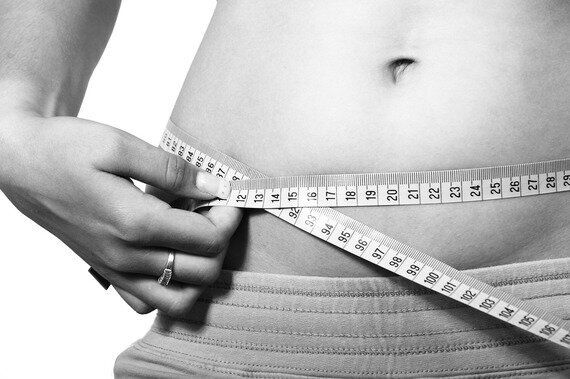
Image Credit: Shutterstock (AXL's portfolio)
The decision to start losing weight isn't always an easy one to make - but most of us find that, once we've made it, dropping those pounds is easy at first. Whether you're counting calories, fitting in extra visits to the gym, or both, when you first start losing weight, it's wonderful - the pounds slide off, the numbers on the scale rocket downwards, and the sense of achievement is fantastic. Yet the confounding fact is, the more weight you lose, the harder it becomes to lose more... and this can result in the dreaded fat loss plateau.
The fat loss plateau may seem confusing, but it's simple, really. The larger you are, the more calories you need to maintain your weight, and as you lose fat, you need less and less calories to stay the same size. This is compounded by the fact that your body has a different opinion of your excess fat than you do - while you may see it as an unattractive embarrassment, your body sees it as an important natural resource... and the less you have of it, the more your body will work to cling to the fat you do have. This can result in your body going into 'starvation mode', and burning muscle, rather than fat, for energy, which is the complete opposite of what most of us are trying to achieve!
The fat loss plateau is common, and something almost all of us have to face when we're trying to get back into shape. Fortunately, that means there's a lot of tried and tested advice out there for kicking your metabolism back into action once it starts dragging its feet!
Overcoming the plateau through nutrition and exercise
When you reach a plateau, the first thing you should try is recalculating your calorie deficit, based on your current weight. Creating a calorie deficit simply means making sure you are burning more calories than you're consuming, whether by restricting your calorie intake or by upping your exercise, and as you lose weight, you burn fewer calories. So you may actually need to make your calorie deficit smaller, to ensure you aren't going into starvation mode, and hanging on to your fat.
Secondly, you may want to consider upping the amount of exercise you are doing, to see if you can reach those stubborn final pounds. But bear in mind that doing too much cardio places your body under stress, so it isn't always the best option if you're already doing the recommended maximum amount per week.
What to do when you've reached the right weight, but can't shift stubborn fat
Plateaus are tough, but they can be worked through. Far worse, is when you've actually reached your target weight and level of fitness, but still don't have the physique you desire. Areas such as the belly, thighs, hips, upper arms and bra area can hang on to stubborn fat cells, even when you've worked your very hardest. As we get older, our metabolism changes - fat levels increase in both genders, hormonal changes cause women to retain more weight around their hips and bellies, and lowered testosterone makes it harder for men to shift stubborn fat cells. Excess weight from childbirth, hormonal or health changes can all have the same effect.
The thought of this can be enough to make you give up, sit back and reach for the biscuits - but it absolutely shouldn't! Exercising is vital for our health, and gets even more important as we get older, and there are other ways of shifting those stubborn extra pounds without going under the knife. CoolSculpting is a revolutionary new technique for fat loss - a celebrity favourite which was featured onscreen by Kim K in Keeping Up with the Kardashians, it involves the freezing of targeted areas of fat cells, causing them to break down and be processed and eliminated by the body, naturally and painlessly. Results can be seen as early as a month after treatment, but are generally visible from around 2-3 months and as long as you don't gain excess weight again, the results will stay with you.
Fat freezing has become so popular that you can even buy kits which promise to allow you to perform it at home - but I cannot stress enough how utterly ill-advised this is. CoolSculpting is a registered trademarked treatment which is also FDA-approved, and benefits from the associated stringent safety standards - frostbite, skin damage, bruising, ulceration and scarring are all associated with improper imitations of the procedure, so don't be fooled by copycats. The authentic cryolipolysis technology includes a patented 'freeze detect' safety feature which monitors the temperature variations in the skin to prevent damage - so always ensure that your procedure is authentic CoolSculpting, manufactured by Zeltiq.
Fat loss plateau is something most people have experienced at some point in their weight-loss cycle, but it can be managed through a combination of calorie deficit management, exercise and, for bothersome fat which cannot be shifted naturally, non-surgical aesthetic treatments. Don't be disheartened when fat refuses to budge - losing weight is an amazing achievement, and once you've beaten the uphill battle of the bulge, the results will speak for themselves.